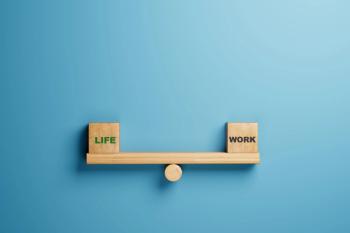
Seven Ways Physicians Can Creatively Manage Time
If you or your medical staff follow the same routine every day, you could be wasting large chunks of time.
Effective time management is dependent, in part, on how creative you are. Creativity means taking novel approaches to problems and issues. If you or your medical staff follow the same routine every day, you could be wasting large chunks of time. When you use creative approaches to the tasks at hand, it often leads to new time-saving breakthroughs and possibilities.
Here are some ideas that can increase your creativity and save time:
Time it right
Studies confirm that most individuals do their best creative thinking early in the morning, although a significant number of people find their peak period to be mid-morning or late at night, a minority are most creative in the evening. Fewer than one in 12 people are most creative during the afternoon. Physicians tend to be early morning larks, but if you're not sure what time of day you're at your creative best, monitor yourself over a one- or two-week period.
Keep a log
Keep a time log of what activities you undertake and when, similar to checking your productivity cycle, and also note your energy level and enthusiasm throughout the various parts of each day. In keeping this log, in between seeing patients, you might be surprised to find exactly when you perform analysis, write reports, or undertake professional reading.
Make small adjustments
Factors that may enhance your personal creativity include, but are not limited to, wearing comfortable clothes, clearing space on your desk, using your favorite writing instrument, or changing your posture (sitting, pacing, or standing). Also, you might try readjusting the height of your seat; experimenting with the type, size, and color or paper you use to write on; or even changing the font and point size as well as background colors on your PC monitor.
Put transition time to work
Be creative in using small amounts of time. For example, transition time, the five minutes it takes you to walk to your office, or the 25 minutes it takes you to drive to work, or the hour you spend on the commuter train, can be used to increase your concentration. You can use this time to focus your attention on the forthcoming appointments or meetings. If you foresee a tough meeting, don't fret. Simply contemplate the upcoming chore, put it into an overall perspective, and acknowledge its importance to your plan of action.
Employ a timer
Use a timer rather than a watch or clock to keep track of time. The temptation to look at the time every five minutes is greater than most of us can resist. A timer with its face hidden, across the room or even tucked into a drawer, will alert you when it's time to move on to another task or to end your day.
Go from task to challenge
If a task is boring, or you have difficulty concentrating, turn the task into a challenge. This technique will make the time go much faster.
Park it 'til tomorrow
If you absolutely can't bring your attention back to a task, let it go for that day. Promise yourself to return to it with a renewed focus the next morning.
Newsletter
Optimize your practice with the Physicians Practice newsletter, offering management pearls, leadership tips, and business strategies tailored for practice administrators and physicians of any specialty.








